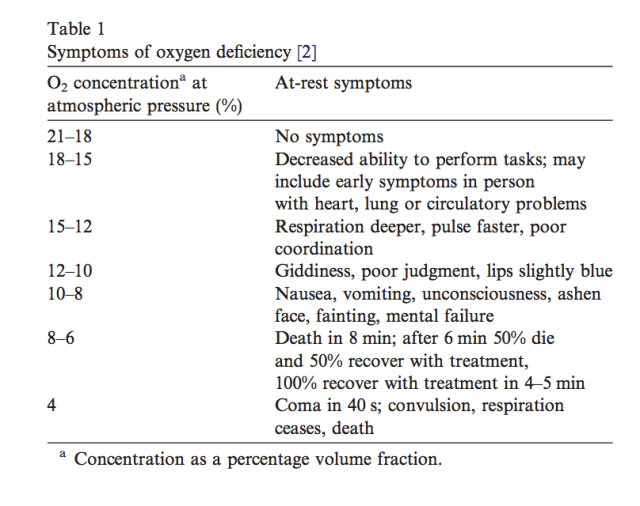 As noted in our earlier Blog, the ‘right-to-die’ movement went into a bit of a tailspin over the news that Balloon Time, a manufacturer of helium party-balloon kits, was henceforth diluting their product. This was because helium had offered a cheap and convenient fail-safe, generally speaking, should someone decide enough was enough.
As noted in our earlier Blog, the ‘right-to-die’ movement went into a bit of a tailspin over the news that Balloon Time, a manufacturer of helium party-balloon kits, was henceforth diluting their product. This was because helium had offered a cheap and convenient fail-safe, generally speaking, should someone decide enough was enough.
Faced with an alternative of throwing oneself under a train, hanging oneself from the rafters or blowing one’s brains out with a gun, it was little wonder that a desperate search for a peaceful alternative ensued.
It was in 1995, when I was collaborating on a book of New Research in Self-deliverance for the Terminally Ill,1 that one our collaborators, a remarkable biochemist from Vancouver called Bruce Dunn, came up with the idea of using inert gases (of which helium and nitrogen are two. In his chapter entitled, Nitrogen and other Inert Gases, Dr Dunn wrote: “Potentially any non-oxygen gas could be used for physician assisted suicide. However, the most suitable gases appear to be nitrogen, argon and helium. Other gases may present moderate to severe hazards to bystanders, may be disagreeable to breathe (carbon dioxide) or pose other difficulties.” After describing in detail necessary conditions regarding the application, Dr Dunn concluded, “Using inert gases requires acquisition of a compressed gas cylinder, an appropriate pressure reducing regulator, and suitable administration equipment. These materials are not inaccessible to a determined individual, but they are relatively difficult for a member of the public to acquire casually or quickly. This tends to prevent the method from being used by suicidal individuals without aid from an outside agency of individual with the requisite equipment and supplies.”
Of course, when people working in the field mulled it over with the sort of obsessiveness for which we are generally known, it soon became clear that all the materials were indeed very accessible. Thousands of people ordered balloon kits as an insurance against an unknown future, and an elderly lady in America even began making and selling a delivery system (in the form of a plastic bag with a bit of tubing attached).2 It never quite got to being like “a suicide booth on every corner,” as Martin Amis so grimly predicted and even advocated,3 but there was a big enough incidence of student deaths for several organisations to train a renewed attack on right-to-die groups such as Exit and Final Exit Network.
Amis, of course, was intending that euthanasia should be available to the exceedingly old if the person wanted it, at a time when medical science had kept them alive long enough to suffer years of debilitating disease in a slow death. Dunn had a similar market in mind – people who desperately wanted it but also had such undeniably good reasons to want it, such as living into extreme old age (at which point we might surely grant them to have lived long enough to make well-intended decisions about their own life) or else such horrific illness that any doctor in a bygone age would have “given them a little something” as a standby if they really and truly needed it.
But enough of reasoning the need! If we can educate youngsters not to drive recklessly in fast sports cars it should not be beyond human capacity to to attend to their emotional well-being and growth, so that they do not turn to the latest ‘suicide fad’ in moments of exam crisis. A grown and competent adult, on the other hand, should really not have to prove a “need” in order to make choices about his or her life.
Helium is suddenly in disfavour. For many people, it is as if, having gone to great pains to ensure a peaceful death (one day in the not so foreseeable future), society and the market has turned round with a bitter grin, saying, “Thought it would be easy, did you? Well just you suffer like everyone else, because we say that deciding the time and manner of your own death is “bad” and not your business at all!”
So let’s dispel some panic. There are no guarantees when crossing the relatively unknown territory of life but we have some pretty good maps. Our members, by and large, managed very well before helium and will continue to do so, even if the goalposts change. Problems with other methods mostly yielded to scientific examination (check our books if you are interested).4 Good helium supplies have not suddenly ceased and nitrogen or argon are not that difficult to obtain: they are just a bit more difficult than buying a balloon kit. This is not an entirely bad thing.
Let’s look at some differences . . .
Helium is still available. Only Balloon Time (manufactured by Worthington) have said they are selling balloon gas that they now openly describe as ‘helium mix‘.5 But for such an important item, it pays to be vigilant. Products have to be fit for purpose so the only legal constraint is that the stuff will float a balloon. Balloon Time canisters are easily recognised since they are usually bright pink in colour and the words “Balloon Time” on them. The other party balloon kits, known as Balloon Occasions are usually a dull beige colour and are manufactured by BOC. BOC’s data sheets still specify their balloon gas at the original, unmixed purity.6 (In North America, BOC trades under the Linde Group. In both continents, both manufacturers have outlets under local names, as do many of the other big gas wholesalers.)
There are some good legitimate reasons why you might want, and have a reasonable right to believe, that you are being sold pure helium (i.e. about 98 per cent pure, not 60 or 80). The two main ones are to use as a diving mix or in welding. It is only when bought as ‘balloon gas’ that you should not assume it is necessarily helium gas and nothing else. Twenty per cent air, by the way, is probably not enough to keep you alive, as a Canadian colleague, Paul Zollman, kindly pointed out to me. (Do the maths: oxygen being 20 per cent of 20 per cent, and refer to standard tables on effects of oxygen deprivation.)7 Yet it is borderline. It could make you very ill for a day or two. Some American dealers are fond of adding “Hi-Float”, a sticky substance that adheres to the inside of a balloon and makes it float for longer with less helium. I hate to imagine what it would do to someone’s lungs! but it again stresses the need for vigilance when purchasing.
Of course, BOC could change their mind next week and say their balloon gas is also just balloon gas, like Worthington’s, and not necessarily helium: but it would be strange if they did so while claiming in print that is was indeed helium.
If you buy an industrial cylinder rather than a balloon canister, you have every reasonable expectation for it to be helium gas (and BOC, unlike Worthington, are a gas company.) The pressure inside such a cylinder can be six times that of a balloon gas canister. So a regulator, largely superfluous before, would be highly recommended. The pressure in industrial tanks is sufficient to do some serious damage!
In the U.K. a regulator, hose and small tank of nitrogen will come to about £80 in total. (No, we don’t give out addresses on the Internet or by email: that bit of work a responsible person will do themself, with or without our book.) Typical costs: We paid £18 for the gas, £25 as a one-off deposit on the cylinder itself, £20 for a regulator and £17 for a hose with the right connectors on it. There is wide variation in prices and and also a big variation from country to country. We’ve covered it in a large new Section of Five Last Acts – The Exit Path, which is selling rather well on Amazon at the moment. (Not cheap as it is over 800 pages and was costly to produce, but that alone should deter casual enquiries.)
Apart from good helium, or buying nitrogen, someone will doubtless make a custom kit available at some time, and quite probably at quite a high price to justify the work necessary to organise it (for those that can afford it). If money is not a problem, BOC also offer a very stylish tank called a Genie. The Genie is a new ‘de-luxe’ in gas tanks. Lightweight, it also has a little set of (removable) wheels to move it about easily, and an interactive digital display to say how much gas is left, as well as protective handles to prevent any regulator damage. Unlike an industrial cylinder it actually looks nice. (Note: connections for the Genie are non-standard. It requires attachments designed for the Genie. Argon and nitrogen attachments are more or less interchangeable, but helium needs a different calibration.
Here’s a few points you might need to bear in mind about nitrogen (and argon) . . .
In the U.K. you will probably need to look credible and fill in some registration details at the shop (nothing major, just name and address and so on). If you try to buy it online from one of the bigger companies like BOC or AirGas, they will probably expect you to open an account. In the U.K. generally, companies will generally not fill up an empty cylinder supplied by another company. Cylinders have to be made to certain specifications, but legal regulations make companies responsible for the ongoing condition of the cylinder and they do this by means identifying it exactly as one of their own ones.8
It is an offence to transport these gas cylinders (as opposed to balloon gas cylinders) in an unsafe manner. Small local stores do not always have all sizes in stock. If a person buys anything other than a smallest canister of nitrogen commercially available, it can pose a slight safety hazard if stored in a small room. Helium is very light indeed: nitrogen is not. Someone can pass out form inhaling nitrogen that has leaked from a cylinder before they realise what is happening.
In America, we have also had reports of small local dealers selling nitrogen that is a bit of a mixture rather than pure; much to the annoyance of the local welder, who relies on the qualities of nitrogen for the type of weld finish (like helium, it is used as a shielding gas).
Car fanatics (and some cyclists) also buy nitrogen (or pay the local garage for it) to fill their tyres (done correctly, it prevents rust). Nitrogen is also sold for the purpose of dispensing beer, including home brews. It gives that sort of head that you can see with dark stouts such as Guinness. Yet the most common nitrogen “beer gas” is only 75 per cent nitrogen, so someone wanting pure nitrogen would need to be very specific.
It might sound technically daunting at first, even before I were to explain how to choose and buy a regulator, but as Dunn said, it is, “not inaccessible to a determined individual, but … relatively difficult for a member of the public to acquire casually or quickly.” And that is perhaps the way it should be. It is something to absorb slowly. (About 300 pages of Five Last Acts – The Exit Path’s 822 pages is devoted to inert gas, with numerous illustrations, diagrams, and explanations both scientific (in the footnotes and references to scientific and medical journals) and laid out in a way that is accessible to any intelligent reader. There’s 23 pages specifically about nitrogen and the differences using industrial gas. It’s a large volume with much research. (Read and use it sensibly!)
Footnotes
1. Docker C, Smith C, Dunn B, Hofsess J, Beyond Final Exit: New research in self-deliverance for the terminally ill. 1995.
2. “The Gladd Bags” constructed and sold by Sharlotte Hydorn.
3. http://www.theguardian.com/books/2010/jan/24/martin-amis-euthanasia-booths-alzheimers
4. Five Last Acts II. This a more compact volume (at just over 400 pages) but does not contain all the detail on nitrogen that is contained in The Exit Path.
5. http://www.balloontime.com/contact-us/faqs/ Balloon Time data; and
http://www.worthingtonindustries.com/getmedia/382c642e-7458-4903-8ae7-3181c426be32/WC042-Helium-Blend.pdf Worthington.
6. http://www.boc.com.au/shop/en/au-boc-industrial-store/balloon-gas BOC data.
7. (see Table 1, below).
8. Relevant legal instruments include:
The Pressure Vessels (Verification) Regulations 1988;
The Carriage of Dangerous Goods and Use of Transportable Pressure Equipment Regulations 2009.

Addendum 28 May: Checking the data sheets for Linde Group in Canada, they are specifying the contents of balloon gas as between 60 and 100 per cent, with 10 to 23 per cent nitrogen. (Material Safety Data Sheet Version 5, printed 11/05/2014).







Thank You. I’m only 50 and have several progressive illnesses for years, and has followed your “blog”. I just wish I could convince a friend or family member to help me when the time comes. If anyone can offer advice on how to ask, and make them understand that I’m not going to do this “on a whim” or I’m just depressed etc… My only wish is to not be alone. I already have my exit,but I’m ok now.
Thanks again for keeping the information available. You can probably understand how I felt after finding this site, RELIEF that so many have my views. You helped me help my Mom that I would never leave her, and I didn’t. It was hard but what in life is easy?
Good Going, MaryAnn
LikeLike
Readers are reminded that asking someone to help a suicide, even a rational suicide, involves them in a criminal act. Although the authorities have been lenient and not always prosecuted where there was clearly no selfish motive (see: CPS Guidelines), it is still a traumatic experience for the person who “assists.” For this and other moral dilemmas, see the Moral and Legal Dilemmas section in our published books.
LikeLike
There seems to be little written about how to eliminate the risk the nitrogen poses to others after a full tank, holding perhaps 20 cubic feet, has been fully discharged into a home (presumably where most people will use this method). Is opening some windows enough? Should electric fans be set up beforehand to circulate and dilute the escaped nitrogen?
LikeLike
I’ve given some consideration to this and some warnings in The Exit Path (2015). Like many things, there are so many variables, such as room size; nitrogen does not disperse as quickly as helium, but neither is it a very heavy gas like sulphur dioxide. We cannot comment on individual instances (and neither does Exit engage in email discussion) but clearly a small cylinder and a well-ventilated room offer better protection. One might even add a fan, but the other scientific opinion on this when it was raised at an international summit agreed with our own calculations, that the nitrogen will disperse fairly readily in a well-ventilated room, and that even someone opening the door would generally create a strong enough draft to disperse remaining nitrogen. Exit offers the best scientific information at any one time in its literature and with brief comment on the Blog. We do not go around as some groups do, ‘guaranteeing’ things, which is not what science does. The accident quoted in the book cited an unintentional death from nitrogen in the literature: it is intended as a warning to explain that additional care is needed when compared with helium (which can also be purchased industrially). It happened in a space that was not properly ventilated at all.
LikeLike
Thanks, that’s very helpful.
LikeLike
Difficult to believe that a biochemist PhD would think that nitrogen is inert! Anyway, thanks for this interesting article.
LikeLike
I think that the point is probably that nitrogen acts as inert in most circumstances (including the present context). Well spotted though!
LikeLike
I don’t know about other places but here in the US compressed gasses are easy to get, no questions asked either. Any wielding supply or compressed gas dealer will sell you a tank 10 cubic feet to 100 cubic feet filled with gas, I’m going to use nitrogen but they have 99 % pure helium as well, they also sell flow regulators, and they won’t ask questions either, they sell this stuff all day long. Tank runs about $140.00, gas in tank 60 cu ft about $ 45.00, flow regulator $ 100.00 (on Amazon $ 30.00) They won’t ask but if you want a response, the nitrogen is for wielding and the helium is for a party.
LikeLike
Thanks for this information!
LikeLike
Great info, everything helps.
LikeLike
Thank you for providing useful information. Your knowledge and expertise are greatly appreciated.
LikeLike
I agree
LikeLike